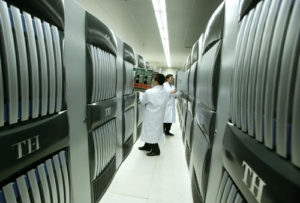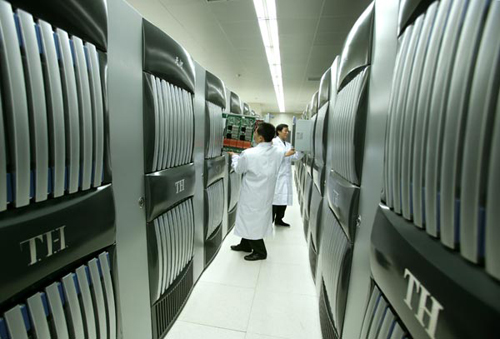 In this video, researchers describe how the Tianhe-1 supercomputer supports scientific research.
In this video, researchers describe how the Tianhe-1 supercomputer supports scientific research.
“Currently #43 on the TOP500, the 2.56 Petaflop Tianhe-1A carries out 1,400 computing tasks per day. It is mainly used to serve universities, research institutions, small and medium-sized enterprises, and provide scientific computing services.”
In October 2010, Tianhe-1A, an upgraded supercomputer, was unveiled at HPC 2010 China. It is now equipped with 14,336 Xeon X5670 processors and 7,168 Nvidia Tesla M2050 general purpose GPUs. 2,048 FeiTeng 1000 SPARC-based processors are also installed in the system, but their computing power was not counted into the machine’s official Linpack statistics as of October 2010. Tianhe-1A has a theoretical peak performance of 4.701 petaflops. NVIDIA suggests that it would have taken “50,000 CPUs and twice as much floor space to deliver the same performance using CPUs alone.” The current heterogeneous system consumes 4.04 megawatts compared to over 12 megawatts had it been built only with CPUs.
The Tianhe-1A system is composed of 112 computer cabinets, 12 storage cabinets, 6 communications cabinets, and 8 I/O cabinets. Each computer cabinet is composed of four frames, with each frame containing eight blades, plus a 16-port switching board. Each blade is composed of two computer nodes, with each computer node containing two Xeon X5670 6-core processors and one Nvidia M2050 GPU processor. The system has 3584 total blades containing 7168 GPUs, and 14,336 CPUs, managed by the SLURM job scheduler. The total disk storage of the systems is 2 Petabytes implemented as a Lustre clustered file system, and the total memory size of the system is 262 Terabytes.




